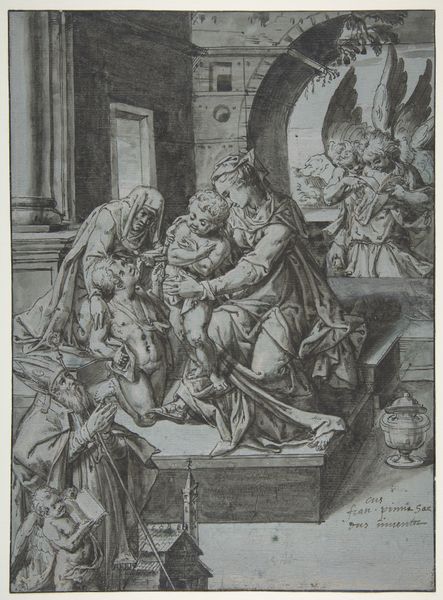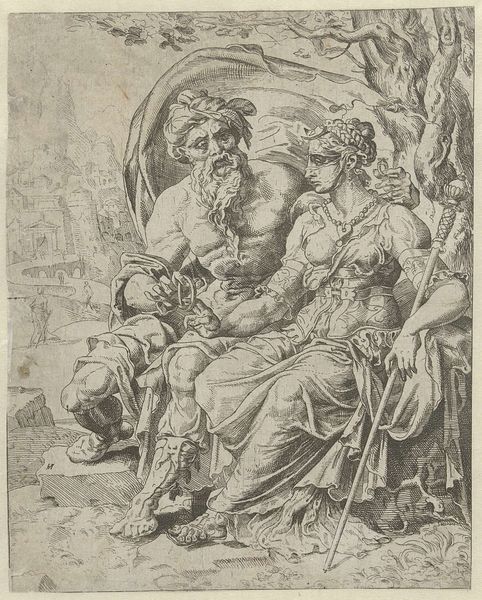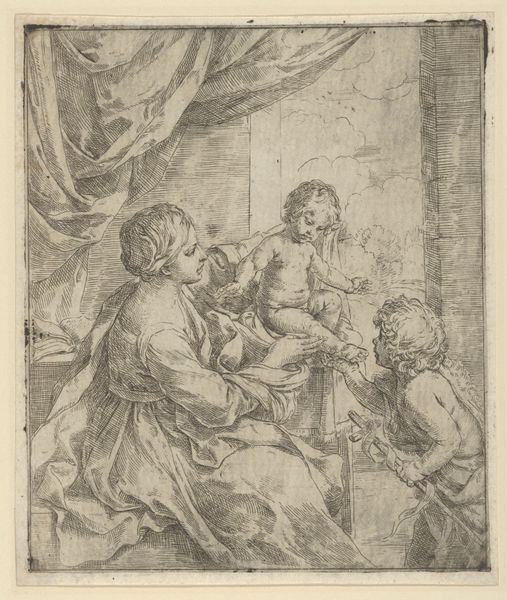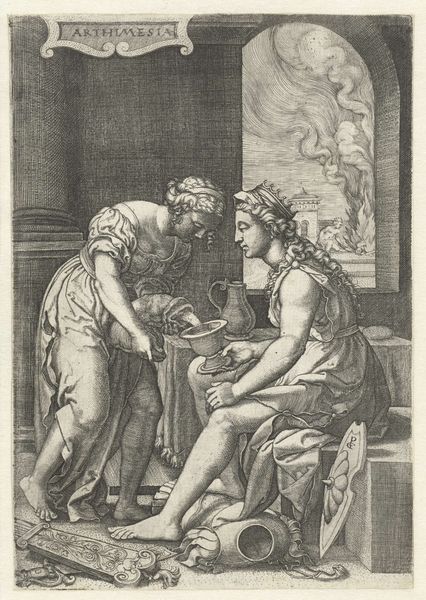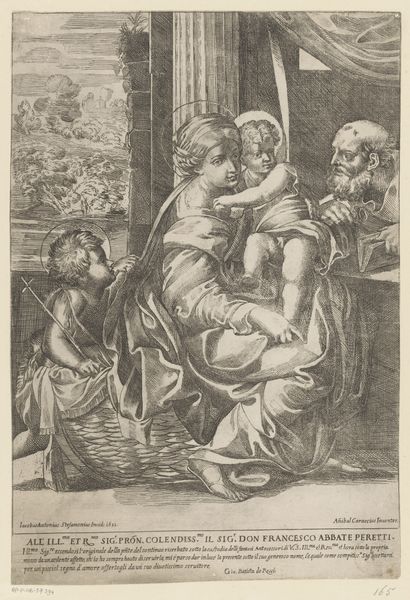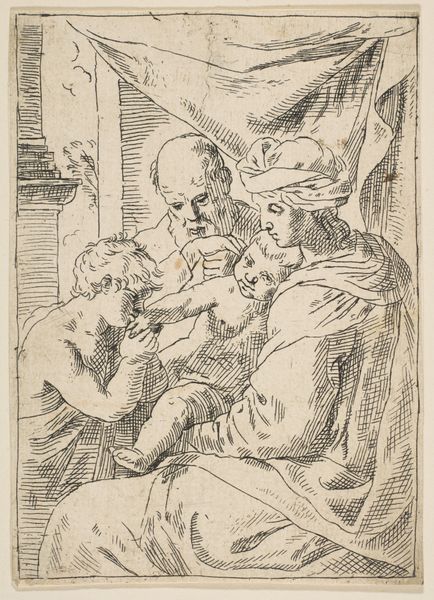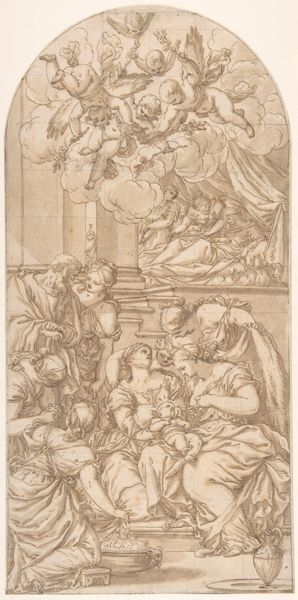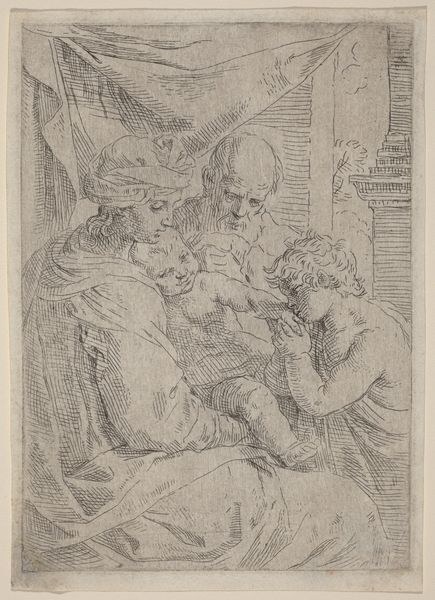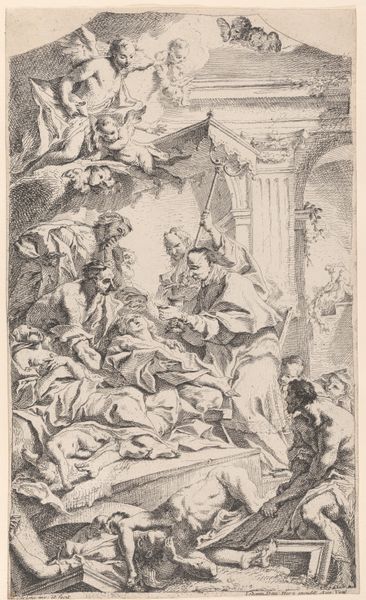
drawing, intaglio, paper, ink, engraving
#
drawing
#
ink drawing
#
narrative-art
#
baroque
#
intaglio
#
figuration
#
paper
#
ink
#
history-painting
#
engraving
Dimensions: height 224 mm, width 187 mm
Copyright: Rijks Museum: Open Domain
Paschatius de Brauwere’s print, “Salomé ontvangt het hoofd van Johannes de Doper,” depicts a grisly scene from the New Testament. Here, Salome receives the head of John the Baptist, a reward for her seductive dance for King Herod. The print, made sometime in the 16th or 17th century, reflects a society grappling with religious authority and moral ambiguity. In the Low Countries, where this print was likely made, the story of Salome was often used to explore themes of female power, temptation, and the consequences of unchecked authority. The beheading of John the Baptist, a figure of moral righteousness, can be seen as a commentary on the corruption of power within both the church and state. The presence of the executioner and Herodias adds layers of intrigue, implicating multiple actors in this drama of lust and retribution. Understanding this artwork requires examining the religious and social history of the Low Countries, with careful attention to the ways gender roles and religious narratives were negotiated and contested.
Comments
No comments
Be the first to comment and join the conversation on the ultimate creative platform.
